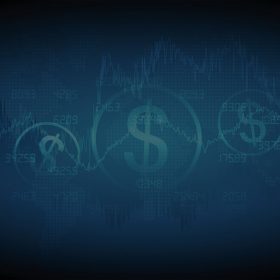Bull vs. Bear
By Terry Savage on April 27, 2020
Where will the stock market go from here? That’s an important question for millions of Americans who have watched their retirement accounts shrink and then rebound — and as the ultimate impact of this economic shutdown become less, not more, clear as the days go by.
Here’s what a leading bull and a leading bear are forecasting. But first some numbers for perspective. In January of this year the Dow Jones Industrial Average peaked at 29,568 — an all-time high. By the week ending March 20 the DJIA had dropped to a closing low of 18,213.
And as you read this column, we are somewhere near the middle of that range. Before hearing their arguments, where do you think the DJIA will end the year — up or down from here?
The Bearish Case
James McDonald is a 25-year veteran of Wall Street and CEO of a hedge fund, Hercules Investments. He has been a money manager for years — and he’s not afraid to go against the crowd. In fact, several weeks ago when the market started its current rally, McDonald spoke up and boldly proclaimed a contrarian position, forecasting a sharp decline to Dow 15,000.
He notes that every single bear market since 1929 had a roughly 50 percent retracement of its losses before continuing down to new lows. The recent rally fits that pattern perfectly. And as a market technician, he notes that at almost every bear market bottom, the forward-looking P/E (price-to-earnings) ratio was about 10 times estimated earnings. Now, he figures that based on currently projected earnings (which are likely to be worse), the “bottom” for the DJIA should be 15,000.
But McDonald isn’t just using mathematical formulas or historical precedents for his forecast. He was already bearish last fall, well before the Coronavirus impacted the economy. Now he predicts the economic impact of this virus will continue on to the end of the year despite multiple trillion-dollar stimulus efforts.
McDonald’s gloomy forecast doesn’t see a market bottom before the end of the year, and he expects the Dow to go as low as 15,000 amid continuing economic woes.
The Bullish Case
On the other hand, Dr. Bob Froelich, an economist, retired money manager and financial author whose six books have been translated into 10 languages, is very bullish on the market at these levels. Every year “Dr. Bob” is the highlight of an economic forecast panel that I moderate in Chicago. In recent years, his predictions have been wildly bullish — and incredibly accurate.
For example, in 2016 Dr. Bob said: “This is the single best time to invest in this country in the last 50 years.” The Dow was at 15,988 back then. He was similarly bullish and correct in subsequent years. In fact, just three months ago, in January, Dr. Bob told our audience that in 2020 the Dow would reach 33,333!
Is Dr. Bob ready to eat his words and swallow that forecast? Definitely not. He figures the combination of low interest rates and low energy prices, along with the trillions in stimulus payments, will propel the market higher.
And, he points to two wild cards. The first is the fact that this is an election year, which will cause most in Washington to vote for whatever it takes to boost the economy — and the market.
And Dr. Bob’s “hidden wild card” is the fact that most big institutions will soon realize their asset allocation formulas are way out of balance. If they are supposed to be 60/40 (stocks/bonds), they’ll find the market decline has left them with maybe 45 percent in stocks. He expects a “buying panic” as these long-term investors rush to load up on equities.
That he says, will produce his forecast of Dow 30,000 by year-end. As for that 33,333 prediction, he’s sticking to it — but says to expect it by the opening day of major league baseball in Spring 2021!
Bullish or bearish, the arguments are compelling on each side. Good thing you don’t have to be all in or all out. You can hedge your bets depending on your own time horizon and risk tolerance. And that’s The Savage Truth.





